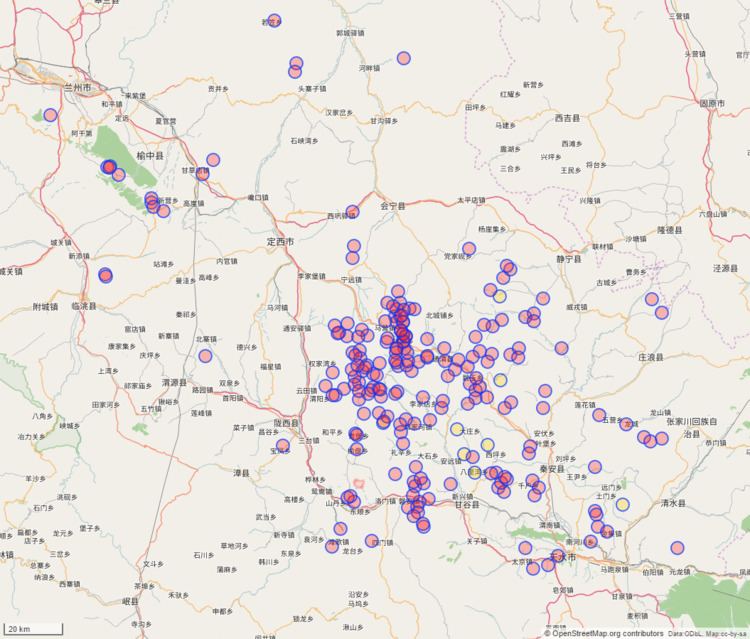Type Defensive line | Condition varies | |
 | ||
Built Qin dynasty, Dungan Revolt (1862–77) | ||
Buzi are a large number of small forts in southern Gansu province, China, usually round or oval and build out of rammed earth walls. The forts are built on hilltops around nearby villages. Most forts are located in Tianshui (over 500) and Dingxi prefectures, totalling over 1400 forts. One of the densest concentration of forts is Tongwei County, which has the nickname "thousand forts county" (千堡之县). Qin'an County is home to three larger castles.
Although each fort may not be impressive on its own, the combined defence line of forts has been compared to the Great Wall of China.
Usage
Although some of the forts date back to the Qin dynasty, they have been used as late as the Sino-Japanese war. During the Dungan Revolt, villagers sought refuge from the raiding and fighting in these forts, and new forts were even constructed with the same methods. As of now, most of the forts lie abandoned, partly due to the difficulty of reaching the hilltops. The courtyards of some forts have filled by farmhouses or Taoist temples.
The defenders inside the forts varied, with some larger forts being permanently manned by trained military, smaller ones were just refuge places for villagers from nearby.
